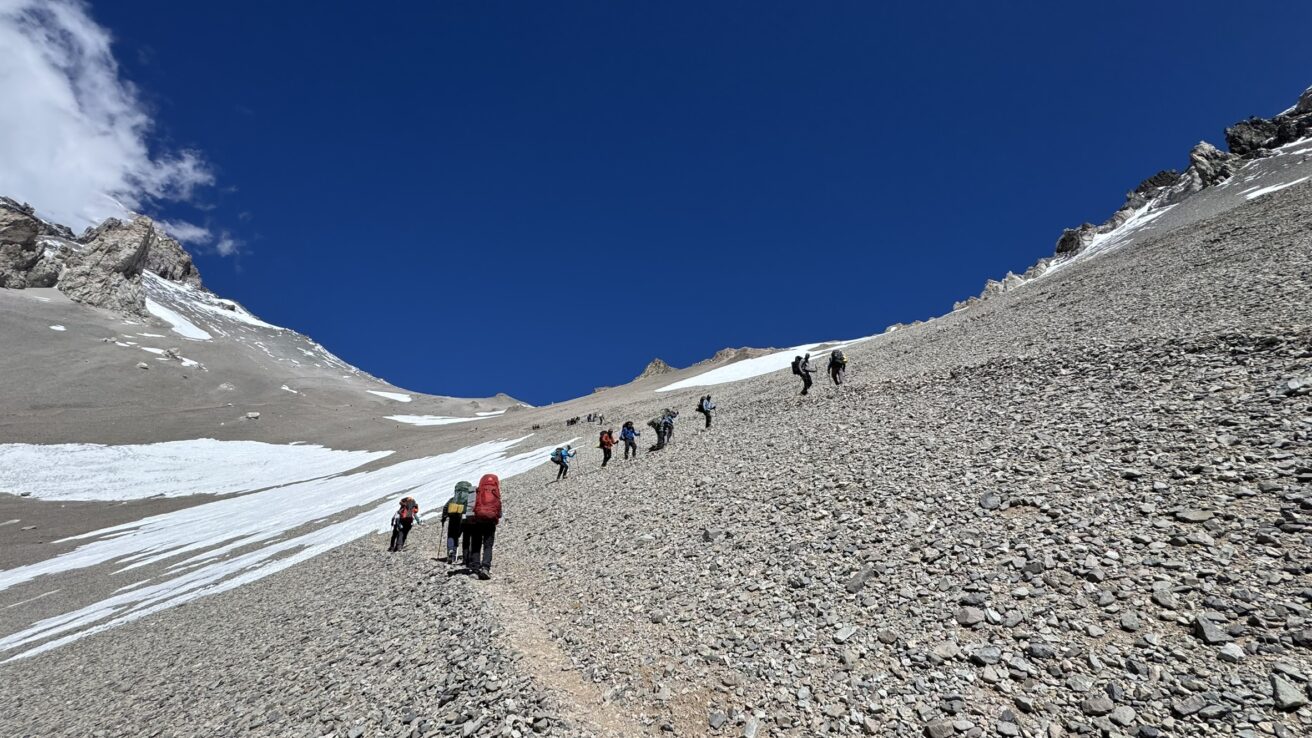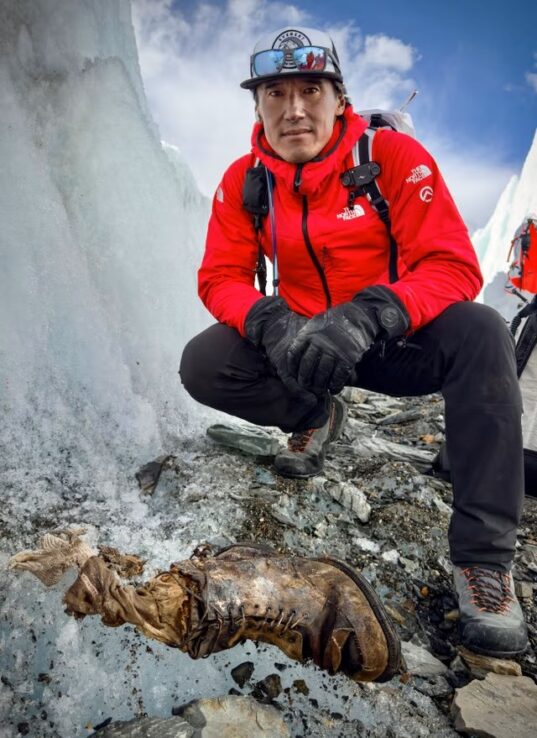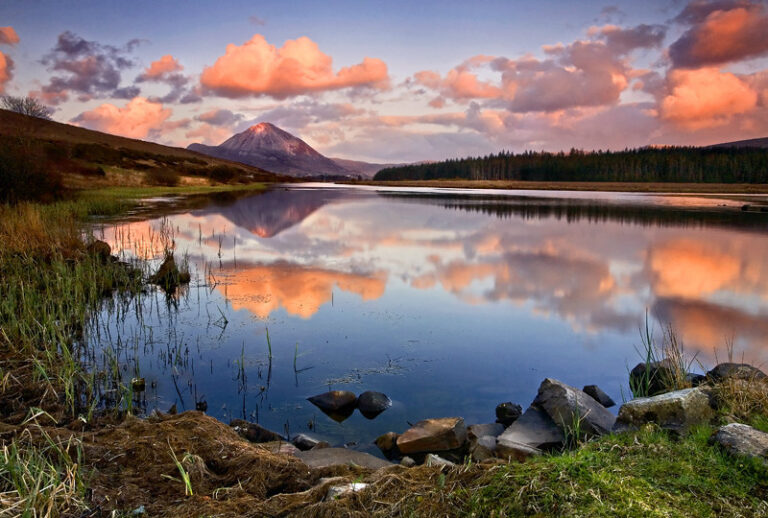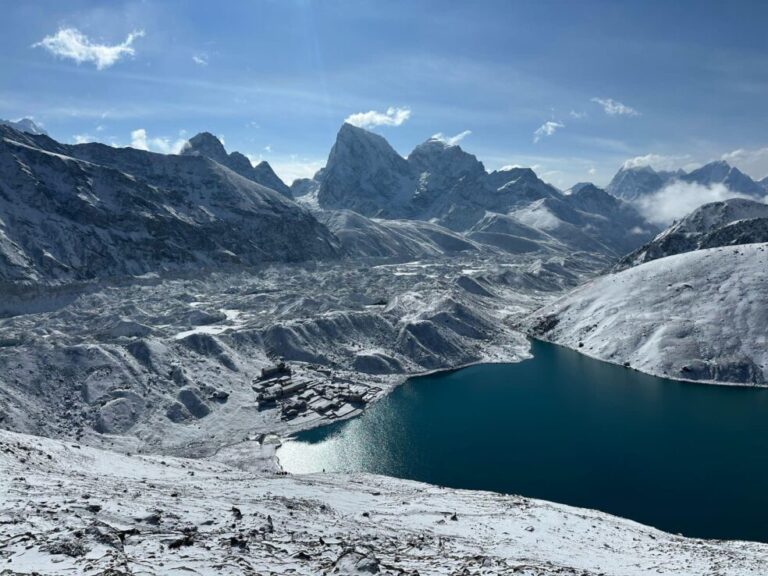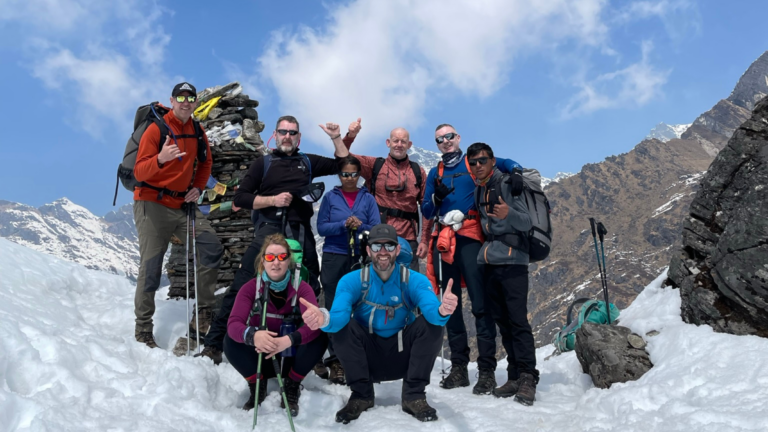Let me be direct: Aconcagua will humble you.
I’ve guided climbers up the highest peak in the Western Hemisphere more times than I can count, and I’ve watched strong, experienced mountaineers struggle on slopes that look deceptively straightforward. I’ve also seen people underestimate this mountain because it’s “non-technical”—a dangerous assumption that ignores the reality of what 6,962 meters of elevation does to the human body.
When we grade Aconcagua as “difficult,” we’re not sugarcoating it. We’re not hedging our bets or being overly cautious. We’re telling you the unvarnished truth about a mountain that has earned every bit of its reputation.
And here’s the thing: that difficulty is precisely what makes it extraordinary.
Understanding the ‘Difficult’ Rating
The grading system for mountaineering expeditions exists for a reason—to set realistic expectations and ensure climbers understand what they’re signing up for. Aconcagua’s “difficult” classification doesn’t come from technical climbing requirements. You won’t need advanced rope skills, ice climbing expertise, or vertical rock scrambling abilities.
The difficulty comes from something far more insidious: the cumulative effect of extreme altitude, brutal weather conditions, and the physical demands of a 19-day expedition that pushes even fit climbers to their absolute limits.
This is a mountain that requires previous experience at altitudes above 5,000 meters. If you haven’t felt what thin air does to your body, mind, and spirit at high altitude, Aconcagua is not the place to learn. This requirement isn’t arbitrary—it’s based on decades of mountain rescue data and the sobering reality that summit success rates hover around 30-40% depending on the season.
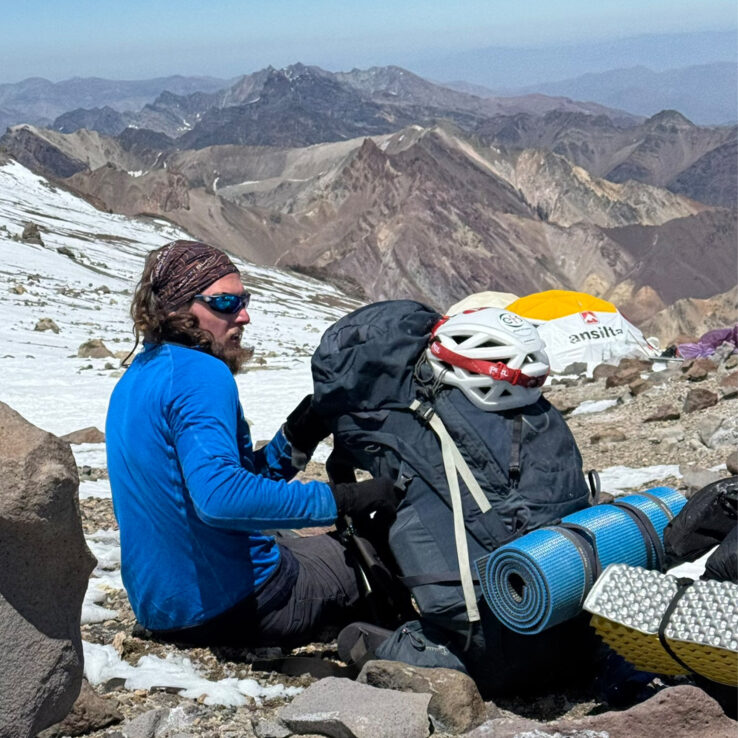
The Altitude Factor: Where Difficulty Begins
Aconcagua’s base camp at Plaza de Mulas sits at 4,260 meters—already higher than the summit of Mont Blanc, Europe’s highest peak. You’re starting your acclimatization at an elevation where many mountains end.
By the time you reach Camp 3 at Berlín-Cólera (5,900 meters), you’re in the realm where the human body begins its slow decline. Above 5,500 meters, you’re not acclimatizing anymore—you’re deteriorating. Your body is consuming itself faster than you can fuel it. Sleep becomes fragmented and unsatisfying. Every breath feels insufficient. Simple tasks require monumental effort.
The summit push from Camp 3 adds another 1,062 meters of elevation gain over 6-8 hours of climbing. At 6,962 meters, the air contains roughly 40% of the oxygen available at sea level. Your brain isn’t functioning optimally. Decision-making becomes compromised. Physical coordination deteriorates.
This isn’t theoretical—this is the physiological reality that makes Aconcagua difficult, regardless of the terrain beneath your boots.
Weather: The Great Equalizer
Aconcagua is notorious for its weather, and with good reason. The mountain creates its own climate systems, channeling winds from the Pacific Ocean that can exceed 100 kilometers per hour. I’ve experienced summit day conditions where the wind chill dropped effective temperatures to -40°C or colder.

These aren’t occasional extreme events—they’re routine occurrences that define the Aconcagua experience. The weather doesn’t care about your fitness level, your previous mountaineering experience, or your determination. When a storm system moves in, even the strongest climbers are reduced to huddling in tents, waiting for conditions to improve.
The weather adds layers of difficulty that go beyond physical discomfort. It tests mental resilience, forces strategic decision-making about summit windows, and occasionally requires the hardest decision of all: turning back despite months of preparation and thousands of dollars invested.
Our daily weather forecasts and avalanche reports aren’t luxuries—they’re critical safety tools that help us navigate the challenging conditions this mountain throws at climbers with regularity.
The Steep Reality: Terrain That Tests
While Aconcagua doesn’t require technical climbing, calling it a “trekking peak” dramatically undersells the physical challenge. The approach to base camp involves days of hiking with elevation gain, but the real difficulty begins above 5,000 meters.
The ascent to Camp 2 at Nido de Cóndores involves steep, rocky terrain at 5,250 meters where every step requires deliberate effort. The push to Camp 3 climbs through increasingly demanding sections where loose scree makes progress exhausting. For every two steps forward, you might slide one step back—a mentally defeating experience when you’re already oxygen-deprived.
Summit day presents the infamous Canaleta—a 400-meter gully of loose scree and rock leading to the summit ridge. It’s steep, exposed to wind, and requires relentless upward progress when your body is screaming to stop. Climbers often describe the Canaleta as the longest 90 minutes of their lives, though it frequently takes much longer.
The descent amplifies the difficulty. Your legs are exhausted, your balance is compromised by altitude, and the steep scree sections that challenged you on the way up become treacherous on the way down. This is when injuries happen—when fatigue and reduced oxygen make every step a potential hazard.
Why Previous High-Altitude Experience Matters
We require climbers to have previous experience above 5,000 meters, and this requirement eliminates a significant portion of interested climbers. It’s not gatekeeping—it’s responsible expedition planning based on what this mountain demands.
Here’s what high-altitude experience teaches you that no amount of sea-level training can replicate:
How Your Body Responds to Hypoxia: Everyone reacts differently to altitude. Some people acclimatize beautifully; others struggle despite excellent fitness. You need to know which category you fall into before attempting Aconcagua, not during your summit push at 6,500 meters.
Mental Management at Altitude: The psychological effects of extreme altitude are profound. Anxiety, irritability, poor decision-making, and irrational thinking are common above 5,500 meters. If you’ve never experienced altitude’s mental effects, you won’t recognize them when they’re influencing your judgment on Aconcagua.
What Suffering Feels Like: High-altitude mountaineering involves sustained discomfort—not acute pain from injury, but the grinding, relentless discomfort of insufficient oxygen, extreme cold, and physical exhaustion that continues for days. You need to know you can endure that before committing to Aconcagua’s 19-day expedition.
Movement Efficiency: At high altitude, every unnecessary movement wastes precious energy. Experienced high-altitude climbers move with deliberate efficiency, conserving energy through practiced technique. This skill only develops through experience.
The Training Reality: Preparing for Difficulty
Our 12-week training program isn’t a suggestion—it’s the minimum preparation required to have a realistic chance of success. The program combines cardiovascular endurance, strength training, hill repeats, and weekend mountain treks designed to simulate the expedition’s demands.
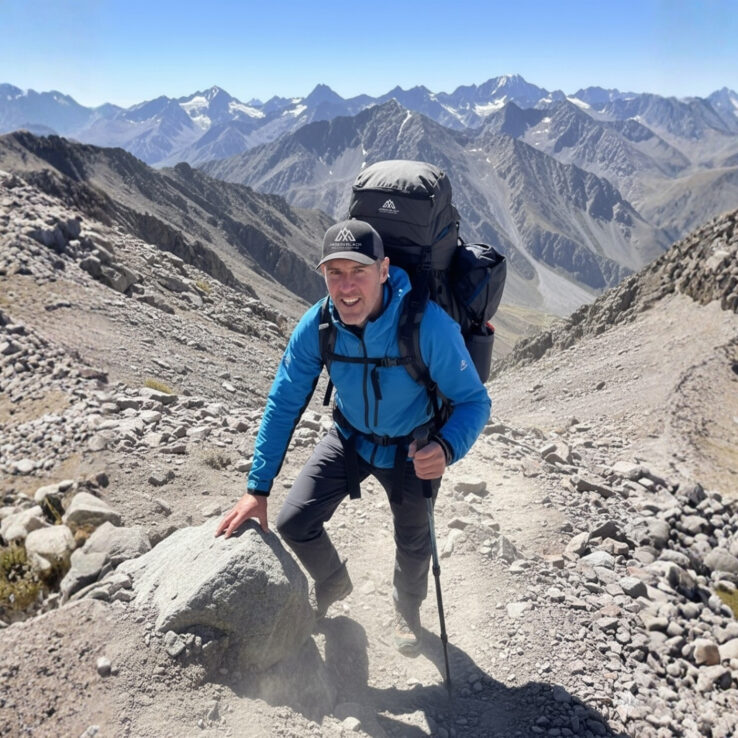
But here’s the harsh truth: even perfect adherence to the training program doesn’t guarantee summit success. I’ve guided exceptionally fit climbers who struggled above 6,000 meters due to poor acclimatization. I’ve also guided climbers who seemed marginally prepared but possessed the mental resilience and high-altitude experience that carried them to the summit.
The training prepares your body for the physical demands, but Aconcagua’s difficulty extends beyond physical fitness. You’re training for:
- Consecutive high-effort days without full recovery between climbs
- Decision-making under duress when exhausted and oxygen-deprived
- Mental resilience during inevitable moments of doubt and suffering
- Team dynamics in challenging conditions that test patience and communication
- Acceptance of uncertainty around weather, acclimatization, and summit success
The difficulty of proper training mirrors the difficulty of the expedition itself—it requires sustained commitment, discomfort, and the willingness to push beyond what feels comfortable.
Technical Skills: Why They Still Matter
Aconcagua doesn’t require advanced technical climbing, but we do require “a good understanding of rope work ascending and descending.” This requirement confuses some climbers who’ve read that Aconcagua is a “walk-up” peak.
The reality is nuanced. In optimal conditions, the standard route doesn’t involve roped climbing. However, conditions are rarely optimal. Early season climbs may encounter snow and ice requiring crampon use and potentially rope protection. The Polish Glacier traverse route definitely requires ice axes, crampons, and rope skills while crossing technical terrain at extreme altitude.
More importantly, the ability to use ropes, crampons, and ice axes signals a broader mountaineering competency. It indicates you’ve spent time in serious mountain environments, understand risk management, and possess the technical foundation that transfers to sound decision-making even on non-technical terrain.
We carry emergency oxygen, maintain daily communication via satellite, and have comprehensive rescue protocols because despite the lack of technical climbing, the difficulty and risks of high-altitude mountaineering remain very real.
The Polish Glacier Alternative: Elevated Difficulty
For experienced climbers seeking additional challenge, the Polish Glacier traverse route offers a more technical approach via Plaza Argentina base camp. This 19-day itinerary crosses the base of the mythic Polish Glacier, requiring crampon skills, ice axe proficiency, and comfort on exposed terrain.

The Polish route’s difficulty grade would exceed the standard route if rated separately. You’re traversing technical sections at 6,000+ meters where the consequences of mistakes are severe. The rewards include more dramatic scenery, fewer climbers, and the satisfaction of completing a more challenging line on the mountain.
Both routes converge for the final summit push from Camp 3, but the approach via Polish Glacier adds technical demands that appeal to climbers seeking difficulty commensurate with their advanced skills.
Embracing Difficulty: Why It Matters
Here’s what mainstream adventure tourism often misses: difficulty isn’t something to avoid, minimize, or sugarcoat. Difficulty is the entire point.
The growth, transformation, and profound satisfaction that come from mountaineering don’t emerge from easy accomplishments. They emerge from pushing against genuine challenges that test your limits and occasionally exceed them.
Aconcagua’s difficulty creates an experience that changes how you see yourself and what you believe you’re capable of achieving. The summit—if you reach it—represents more than standing on top of the Western Hemisphere’s highest point. It represents overcoming genuine adversity through preparation, perseverance, and mental fortitude.
When you’re grinding up the Canaleta at 6,800 meters, questioning every decision that led you to this moment of suffering, the difficulty isn’t something you’re enduring despite the mountain’s reputation. The difficulty is the crucible that forges the experience into something meaningful and lasting.
Why Many Climbers Don’t Summit
Let’s address the elephant in the climbing tent: most climbers who attempt Aconcagua don’t reach the summit. Depending on the season and route, success rates range from 30-60%, meaning 40-70% of climbers turn back.
This isn’t a failure of the climbers or the guiding—it’s a reflection of the mountain’s genuine difficulty. Common reasons for turning back include:
- Altitude sickness that doesn’t respond to acclimatization strategies
- Extreme weather creating unsafe summit conditions
- Physical exhaustion beyond what training prepared them for
- Injury from falls, frostbite, or cumulative strain
- Poor acclimatization despite following proper protocols
Our summit day policy reflects this reality. As expedition leader, my goal is getting everyone to the summit safely, but I maintain absolute authority to prohibit any climber from attempting the summit if I deem them not strong or healthy enough to return safely. This isn’t arbitrary—it’s based on decades of high-altitude experience and a zero-tolerance approach to preventable tragedies.
This policy underscores the difficulty honestly. Your investment of time, money, and effort doesn’t guarantee a summit. The mountain makes that determination, and respect for the mountain’s difficulty means accepting that outcome.
The Rewards of Difficulty
After painting a realistic picture of Aconcagua’s challenges, you might wonder: why attempt it?
Because difficulty transforms us in ways that comfort never can.
The physical demands build strength and endurance that extend far beyond mountaineering. The mental challenges develop resilience applicable to every difficult situation life presents. The altitude experience expands your understanding of what the human body can endure. The team dynamics teach collaboration under pressure.
Standing on Aconcagua’s summit at 6,962 meters, looking across the Andes with Chile’s peaks stretching to the Pacific, you’ll possess something that can’t be bought, faked, or diminished: the knowledge that you overcame genuine difficulty through preparation, perseverance, and respect for the mountain’s challenges.
That knowledge changes you. It changes how you approach challenges in your professional life, your relationships, and your personal goals. The confidence that comes from summiting Aconcagua isn’t arrogance—it’s quiet certainty born from tested experience.
The Jason Black Mountaineering Approach
Our small group size (maximum 10 climbers) and professional guide ratio maximize safety and summit success while minimizing environmental impact. Jason Black personally guides every Aconcagua expedition, bringing world-class high-altitude expertise including records for fastest ascents of both Kilimanjaro and an Aconcagua traverse.

We don’t minimize difficulty—we prepare you for it. Our comprehensive pre-expedition support includes detailed gear lists, training programs, and honest assessments of what you’ll face. On the mountain, we maintain luxury base camp facilities, specialized cooking staff, daily weather forecasts, and emergency oxygen to support your summit attempt.
Our leave-no-trace commitment ensures the mountain remains pristine for future generations. Our team-first culture emphasizes that individual summit aspirations never supersede group safety.
This approach produces higher summit success rates than industry averages while maintaining an exceptional safety record—not by making Aconcagua easier, but by respecting its difficulty and preparing climbers to meet that challenge.
Final Thoughts: The Truth About Difficulty
Aconcagua deserves its “difficult” rating. The extreme altitude, brutal weather, demanding terrain, and 19-day commitment combine to create a genuine mountaineering challenge that tests experienced climbers.
Don’t approach this mountain seeking an easy 7,000-meter peak to check off your list. Approach it with respect for what high-altitude mountaineering demands: prior experience above 5,000 meters, serious training commitment, mental resilience, and acceptance that summit success is never guaranteed.
The difficulty is real. The rewards are extraordinary. The experience will change you.
Are you ready to embrace the challenge?
CTA (if applicable):
Ready to test yourself on the Western Hemisphere’s highest peak? Join Jason Black for this 19-day expedition that separates mountaineers from tourists. Previous 5,000m+ experience required.

